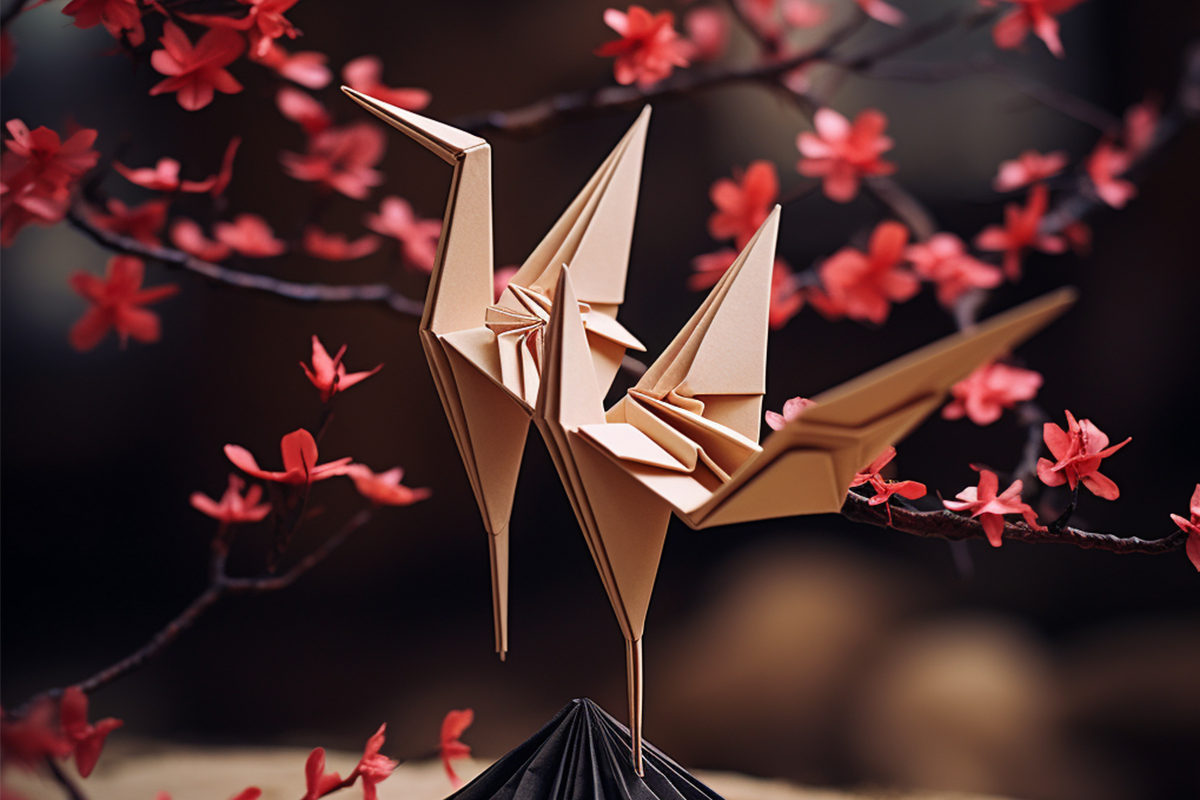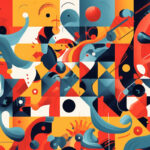Origami is the art of folding paper to create beautiful shapes, animals, and plants. It is a craft that has been around for centuries, with roots in Japan and China. If you’re thinking of trying out this art form, you’ll need a good book to get started. In this article, we’ll be looking at some of the best origami books for all skill levels.

Understanding the Art of Origami
Before we delve into the different books, let’s take a moment to understand the art of origami. Origami is all about using a single sheet of paper to create three-dimensional shapes. It’s not just about folding paper; it’s about creating something beautiful from something as simple as a piece of paper.
Origami is a fascinating art form that has a rich history. The word “origami” comes from the Japanese words “ori” meaning “to fold” and “kami” meaning “paper.” Origami dates back to ancient Japan and China, where it was used to create decorations for festivals and celebrations. In Japan, origami was also used as a form of ceremonial gift-giving.
Origami has come a long way since its humble beginnings. Today, it is practiced all over the world as a form of art, a hobby, and a means of relaxation. It has even been used in scientific and mathematical research, as it provides a unique way of visualizing complex concepts.
The History of Origami
The exact origins of origami are unclear, but it is believed to have originated in China around the first century AD. It then spread to Japan, where it evolved into the art form we know today. In Japan, origami was often associated with the Shinto religion, and it was used to create offerings for the gods.
Origami has also played a role in Japanese folklore. The story of the Thousand Origami Cranes, for example, is a popular tale about a young girl named Sadako who was diagnosed with leukemia after the atomic bombing of Hiroshima. According to the story, if she could fold one thousand cranes, she would be granted a wish. Although she did not live to complete her task, her story has inspired many people to fold cranes in her memory.
The Different Types of Origami
Origami is a versatile art form that can be used to create a wide variety of shapes and designs. Some of the most popular origami shapes include animals, flowers, and geometric shapes. Origami can also be used to create boxes, envelopes, and other useful objects.
One of the great things about origami is that it can be enjoyed by people of all skill levels. Beginners can start with simple shapes like the classic paper crane, while more advanced folders can attempt complex designs like the Kawasaki rose.
The Benefits of Practicing Origami
Origami is not only enjoyable, but it also has numerous benefits for your mental and physical well-being. Creating something with your hands is a great stress-reliever, and origami is no exception. It can help to reduce anxiety and promote relaxation.
Origami also helps to develop hand-eye coordination and improve concentration. The act of folding paper requires a great deal of focus and attention to detail, which can help to sharpen your mind and improve your overall cognitive function.
Finally, origami is a great way to spend your free time while also learning a new skill. It’s a fun and rewarding hobby that can provide a sense of accomplishment and satisfaction.
Top Origami Books for Beginners
If you’re new to origami, here are some of the best books to get you started. Origami is a fascinating art form that originated in Japan. It involves folding a single sheet of paper into various shapes and designs. The art of origami can be used to create anything from simple animals to complex geometric shapes.
Origami can be a great way to relax and unwind. It’s also a great way to exercise your brain and improve your focus and concentration. Plus, it’s a fun activity that you can do alone or with friends and family.
Easy Origami by John Montroll
This book is perfect for beginners. It contains over 30 easy-to-follow origami projects with step-by-step instructions. The book includes projects like the crane, boat, and frog, which are easy to fold but look impressive. The projects in this book are perfect for kids and adults alike. You can use them to decorate your home or give as gifts to your loved ones.
Origami is a great way to develop your fine motor skills and hand-eye coordination. It can also help you improve your spatial awareness and problem-solving skills. Plus, it’s a great way to boost your creativity and imagination.
You can find this book here.
Origami for the Enthusiast by John Montroll
For those who want to take their origami skills to the next level, this book is perfect. It includes over 25 projects, ranging from intermediate to advanced. The book is well-organized, with clear instructions and photos to guide you through each project. The projects in this book are more challenging than those in Easy Origami, but they are equally rewarding.
Origami is a great way to reduce stress and anxiety. It can also help you improve your memory and concentration. Plus, it’s a great way to connect with others who share your passion for this amazing art form.
You can find this book here.
The Complete Book of Origami by Robert J. Lang
This book is perfect for those who want to master origami. It includes over 100 projects, ranging from the simple to the complex. The book is well-written with clear instructions, and it includes diagrams and photos to make the folding process easier. The projects in this book are challenging, but they are also incredibly rewarding.
Origami is a great way to improve your patience and perseverance. It can also help you develop your problem-solving skills and boost your confidence. Plus, it’s a great way to express your creativity and create beautiful works of art.
You can find this book here.
Best Origami Books for Intermediate Folders
If you’ve mastered the basics and are ready to move on to more challenging projects, here are some books that will help you improve your skills.
Genuine Origami by Jun Maekawa
This book is perfect for intermediate folders looking to improve their skills. The book includes 41 projects, ranging from toads and rabbits to more complex designs like the unicorn and pegasus. The book includes detailed instructions, diagrams, and photos to help you along the way.
One of the standout projects in this book is the pegasus. The design is intricate and beautiful, but not too difficult for intermediate folders. The instructions are clear and easy to follow, and the diagrams are helpful in visualizing the steps. Once completed, the pegasus makes for a stunning display piece.
Another great project in this book is the toad. While it may seem like a simple design, the toad requires a certain level of precision and attention to detail. The end result is a charming little origami creature that is sure to delight anyone who sees it.
You can find this book here.
Origami Design Secrets by Robert J. Lang
If you’re looking to design your own origami shapes, this book is for you. This book delves into the mathematics behind origami and provides detailed instructions on how to create your own designs. The book is not for beginners, but it’s an excellent resource for more advanced folders.
One of the most fascinating aspects of this book is the section on curved creases. This technique allows for more organic and flowing designs, and is a hallmark of Lang’s work. The book also includes information on advanced topics like tree theory and circle packing, which can be used to create complex origami shapes.
You can find this book here.
Advanced Origami by Michael G. LaFosse
This book is for advanced folders looking for a challenge. The book includes projects like the Chinese dragon and the American bald eagle. The book also includes a section on wet-folding, which allows for more precise curves and angles. The book is well-written with clear instructions and diagrams.
The Chinese dragon is one of the most impressive projects in this book. The design is intricate and detailed, and the finished product is truly stunning. The instructions are clear, but the project requires a lot of patience and attention to detail.
The section on wet-folding is also a valuable resource for advanced folders. This technique involves dampening the paper before folding, which allows for more precise curves and angles. The result is a more organic and natural-looking design.
You can find this book here.
Overall, these three books are excellent resources for intermediate and advanced folders looking to improve their skills and take on more challenging projects. Whether you’re interested in creating your own designs or tackling complex origami shapes, these books have something to offer for everyone.
Must-Have Origami Books for Experts
If you’re an expert in origami, you know that the art form is more than just folding paper. It’s about creating intricate designs that challenge your creativity and push the limits of what’s possible with paper. For those looking to take their origami skills to the next level, here are three must-have books that will inspire and challenge you.
Works of Satoshi Kamiya 1995-2003
This book includes the works of Satoshi Kamiya, one of the world’s foremost origami designers. Kamiya is known for his complex and intricate designs, and this book is no exception. The book includes 18 projects, ranging from the Eastern dragon to the divine eagle. Each project is accompanied by detailed instructions and diagrams, making it a great resource for expert folders looking for a challenge. With this book, you’ll be able to create some of the most impressive origami designs in the world.
You can find this book here.
Origami Tessellations by Eric Gjerde
If you’re interested in origami tessellations, this book is a must-have. Tessellations are a unique form of origami that involves folding paper in a way that creates repeating patterns. This book includes detailed instructions on how to create complex geometric shapes, such as stars, flowers, and cubes. The book is well-organized, and it includes clear instructions and diagrams that make it easy to follow along. With this book, you’ll be able to create stunning origami designs that are sure to impress.
You can find this book here.
Origami Insects and Their Kin by Robert J. Lang
For insect lovers, this book is perfect. It includes over 20 projects, ranging from the simple butterfly to the complex dung beetle. Each project is accompanied by clear instructions and diagrams, making it easy to create these intricate shapes. In addition to the projects, the book includes information on the biology and behavior of each insect, making it a great resource for anyone interested in entomology. With this book, you’ll be able to create realistic and detailed origami insects that are sure to amaze.
You can find this book here.
Overall, these three books are essential for any expert origami folder. They’ll challenge you, inspire you, and help you take your skills to the next level. Whether you’re interested in creating complex animals, geometric shapes, or realistic insects, there’s a book here for you. So what are you waiting for? Start folding!
Conclusion
In conclusion, there’s a book for every skill level in origami. Whether you’re a beginner or an expert, there’s always room for improvement. The books listed above are just a few of the many resources available to help you improve your origami skills. So get folding and see where your creativity takes you!
- The 11 Best Books About Cats You Should Read - January 16, 2024
- The 9 Best Books on Building Confidence - January 16, 2024
- Discover the 10 Best Books on the Brain - January 16, 2024





